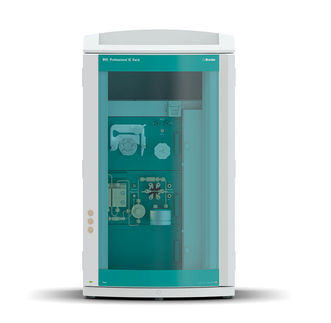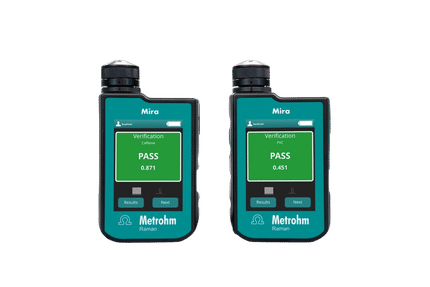|
|
| Neurotransmitter-gated ion-channel transmembrane region
|
| Identifiers
|
| Symbol
| Neur_chan_memb
|
| Pfam
| PF02932
|
| InterPro
| IPR006029
|
| SCOP
| 1cek
|
| TCDB
| 1.A.9
|
| OPM family
| 14
|
| OPM protein
| 2bg9
|
| Available PDB structures:
1oedE:242-483 2bg9E:242-389 1dxzA:260-291
3mra :301-325 1a11 :276-298 1cekA:276-298
1eq8E:276-298 1motA:277-304 1vryA:281-337
|
| Neurotransmitter-gated ion-channel ligand binding domain
|
| Identifiers
|
| Symbol
| Neur_chan_LBD
|
| Pfam
| PF02931
|
| InterPro
| IPR006202
|
| SCOP
| 1lxg
|
| Available PDB structures:
1ux2F:34-142 1uw6D:34-142 1i9bE:34-142
1uv6J:34-142 1yi5A:34-142 2bysD:23-226
2byrI:23-226 2byqA:23-226 2br7D:23-226
2bypC:23-225 2bynA:23-226 2bg9B:28-241
1lk1G:28-241 1olkE:28-241 1ol8B:26-230
1ol3A:26-230 1ol4B:26-230 1kl8B:201-219
1kc4B:201-219 1ol9A:26-230 1y5tB:230-235
1l4wB:206-226 1ljzB:206-226 1idgB:205-222
1tos :91-99 1lxgB:205-222 1lxhB:205-222
1idhB:205-222 1tor :91-100 1oleA:39-245
1olfA:29-235 1oljC:29-235
|
The Ligand-gated ion channels, also referred to as LGICs, or ionotropic receptors, are a group of intrinsic transmembrane ion channels that are opened or closed in response to binding of a chemical messenger, as opposed to voltage-gated ion channels or stretch-activated ion channels.[1]
Regulation
The ion channel is regulated by a ligand and is usually very selective to one or more ions like Na+, K+, Ca2+, or Cl-. Such receptors located at synapses convert the chemical signal of presynaptically released neurotransmitter directly and very quickly into a postsynaptic electrical signal.
Many LGICs are additionally modulated by allosteric ligands, by channel blockers, ions, or the membrane potential.
Structure
Each subunit of the pentameric channels consist of the extracellular ligand-binding domain and a transmembrane domain. Each transmembrane domain in the pentamer includes four transmembrane helixes.[2]
Example: nicotinic acetylcholine receptor
The prototypic ligand-gated ion channel is the nicotinic acetylcholine receptor. It consists of a pentamer of protein subunits, with two binding sites for acetylcholine, which, when bound, alter the receptor's configuration and cause an internal pore to open. This pore, permeable to Na+, allows Na+ ions to flow down their electrochemical gradient into the cell. With a sufficient number of channels opening at once, the intracellular Na+ concentration rises to the point at which the positive charge within the cell is enough to depolarize the membrane, and an action potential is initiated.
Classification and examples
Many important ion channels are ligand-gated, and they show a great degree of homology at the genetic level. The Ligand-gated ion channels are classified into three superfamilies:
The Cys-loop receptors
- anionic
- GABAA
- α1 (GABRA1), α2 (GABRA2), α3 (GABRA3), α4 (GABRA4), α5 (GABRA5), α6 (GABRA6)
- β1 (GABRB1), β2 (GABRB2), β3 (GABRB3)
- γ1 (GABRG1), γ2 (GABRG2), γ3 (GABRG3)
- δ (GABRD), ε (GABRE), π (GABRP), θ (GABRQ)
- GABAC
- ρ1 (GABRR1), ρ2 (GABRR2), ρ3 (GABRR3)
- Glycine (GlyR)
- GlyR-α1 (GLRA1), GlyR-α2 (GLRA2), GlyR-α3 (GLRA3), GlyR-α4 (GLRA4)
- GlyR-β (GLRB)
- cationic
- 5-HT3 serotonin receptor
- 5-HT3A (HTR3A), 5-HT3B (HTR3B), 5-HT3C (HTR3C), 5-HT3D (HTR3D), 5-HT3E (HTR3E)
- nicotinic acetylcholine receptor (nAChR)
- nAChR-α1 (CHRNA1), nAChR-α2 (CHRNA2), nAChR-α3 (CHRNA3), nAChR-α4 (CHRNA4), nAChR-α5 (CHRNA5), nAChR-α6 (CHRNA6), nAChR-α7 (CHRNA7), nAChR-α8 (CHRNA8), nAChR-α9 (CHRNA9), nAChR-α10 (CHRNA10)
- nAChR-β1 (CHRNB1), nAChR-β2 (CHRNB2), nAChR-β3 (CHRNB3), nAChR-β4 (CHRNB4)
- nAChR-δ (CHRND), nAChR-ε (CHRNE), nAChR-γ (CHRNG)
- AMPA
- GluR1 (GRIA1), GluR2 (GRIA2), GluR3 (GRIA3), GluR4, alternatively called GluRA-D (GRIA4)
- Kainate
- GluR5 (GRIK1), GluR6 (GRIK2), GluR7 (GRIK3)
- KA1 (GRIK4), KA2 (GRIK5)
- NMDA
- NR1 (GRIN1)
- NR2A (GRIN2A), NR2B (GRIN2B), NR2C (GRIN2C), NR2D (GRIN2D)
The ATP-gated channels
- P2X
- P2X1 (P2RX1), P2X2 (P2RX2), P2X3 (P2RX3), P2X4 (P2RX4), P2X5 (P2RX5), P2X7 (P2RX7), P2XL1 (P2RXL1)
Clinical relevance
Ligand-gated ion channels are likely to be the major site at which anaesthetic agents have their effects, although unequivocal evidence of this is yet to be established.[3][4] In particular, the GABA and NMDA receptors are affected by anaesthetic agents at concentrations similar to those used in clinical anaesthesia.[5]
See also
References
- ^ Connolly CN, Wafford KA (2004). "The Cys-loop superfamily of ligand-gated ion channels: the impact of receptor structure on function". Biochem. Soc. Trans. 32 (Pt3): 529–34. doi:10.1042/BST0320529. PMID 15157178.
- ^ Cascio M (2004). "Structure and function of the glycine receptor and related nicotinicoid receptors". J. Biol. Chem. 279 (19): 19383–6. doi:10.1074/jbc.R300035200. PMID 15023997.
- ^ Krasowski MD, Harrison NL (1999). "General anaesthetic actions on ligand-gated ion channels". Cell. Mol. Life Sci. 55 (10): 1278–303. doi:10.1007/s000180050371. PMID 10487207.
- ^ Dilger JP (2002). "The effects of general anaesthetics on ligand-gated ion channels". Br J Anaesth 89 (1): 41–51. doi:10.1093/bja/aef161. PMID 12173240.
- ^ Harris RA, Mihic SJ, Dildy-Mayfield JE, Machu TK (1995). "Actions of anesthetics on ligand-gated ion channels: role of receptor subunit composition". FASEB J. 9 (14): 1454–62. PMID 7589987.
| Membrane transport protein: ion channels |
|---|
| Ca2+: Calcium channel | Voltage-dependent calcium channel (L-type/Cavα(1.1, 1.2, 1.3, 1.4), N-type, P-type/Cavα(2.1), Q-type, R-type, T-type, β-subunits (β1, β2, β4), γ-subunits (γ2) • Inositol triphosphate receptor • Ryanodine receptor • Cation channels of sperm • Two-pore channel |
|---|
| Na+: Sodium channel | Navα (1.1, 1.2, 1.4, 1.5, 1.7, 1.9) • Navβ (1, 3, 4) • Epithelial sodium channel |
|---|
| K+: Potassium channel | Voltage-gated (Kvα (1.1, 1.2, 1.3, 1.4, 1.5, 2.1, 4.2, 4.3, 7.1, 7.2, 7.3, 7.4, 10.1, 11.1/hERG) • Kvβ (1, 2), Shaker gene, KCNE1) • Calcium-activated (BK channel, SK channel, SK3) • Inward-rectifier Kir (1.1, 2.1, 2.2, 2.3, 3.1, 3.2, 3.4, 4.1, 4.2, 6.1, 6.2)) • Tandem pore domain K2P (1, 2, 3, 4, 6, 9) |
|---|
| Cl-: Chloride channel | Cystic fibrosis transmembrane conductance regulator |
|---|
| Porin | Aquaporin (1, 2, 3, 4) • Voltage-dependent anion channel (1) |
|---|
| Cations: TRP | TRPA (1) • TRPC (1, 2, 3, 4, 4AP, 5, 6, 7) • TRPM (1, 2, 3, 4, 5, 6, 7, 8) • TRPML (Mucolipin-1) • TRPP (1, 2)• TRPV (1, 2, 3, 4, 5, 6) |
|---|
| Other/general | Voltage-gated ion channel • Ligand-gated ion channel • Cyclic nucleotide-gated ion channel (α1, α3, β3, H1, H2, H4) • Stretch-activated ion channel |
|---|
| Ion channel, receptor: ligand-gated ion channels |
|---|
| Cys-loop receptors | 5-HT receptor (5-HT3 serotonin receptor (A)) - GABA receptor (GABA A (α1, α2, α3, α5, α6, β1, β2, β3, γ2, ε), GABA C (ρ1)) - Glycine receptor (α1) - Nicotinic acetylcholine receptor (α1, α2, α3, α4, α5, α7, β2, β3, β4, δ, ε, (α4)2(β2)3, (α7)5, Ganglion type, Muscle type) |
|---|
| Ionotropic glutamate receptors | AMPA (1, 2, 3, 4) - Kainate (1, 2) - NMDA (1, 2A, 2B, 2C, 2D) |
|---|
| ATP-gated channels | Purinergic receptors (P2X (1, 4, 5, 7)) |
|---|
|







